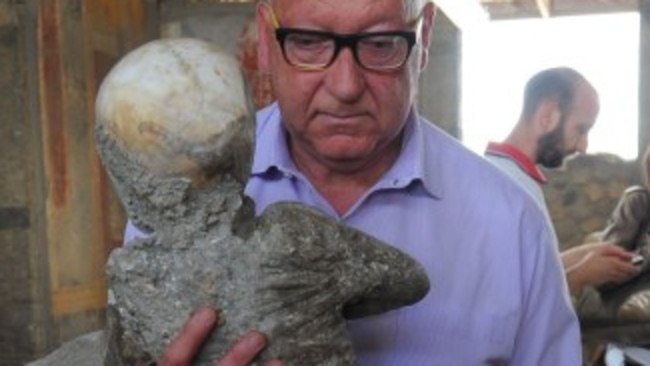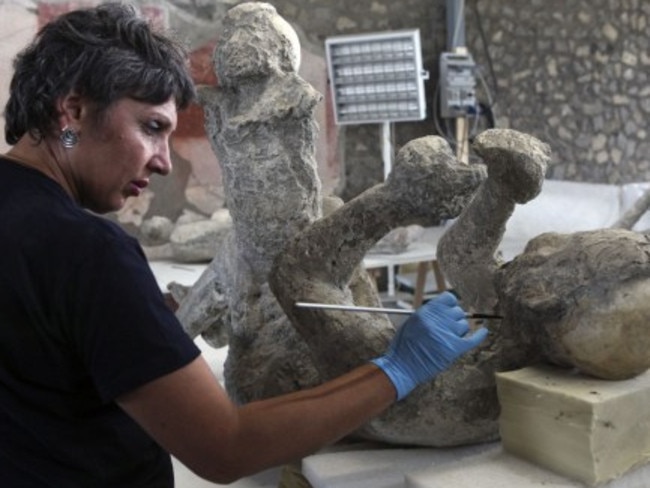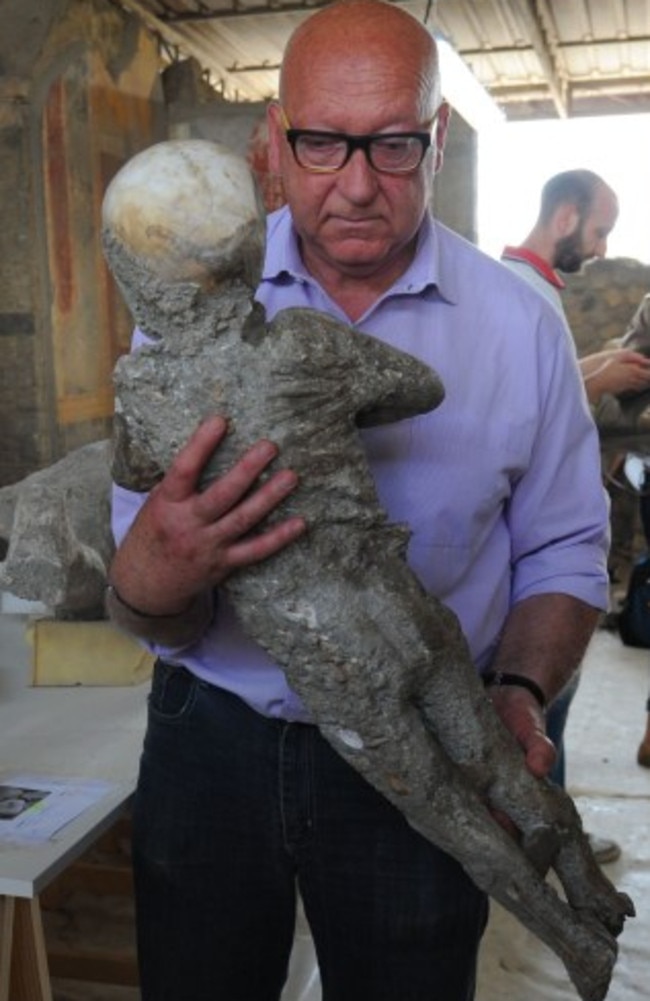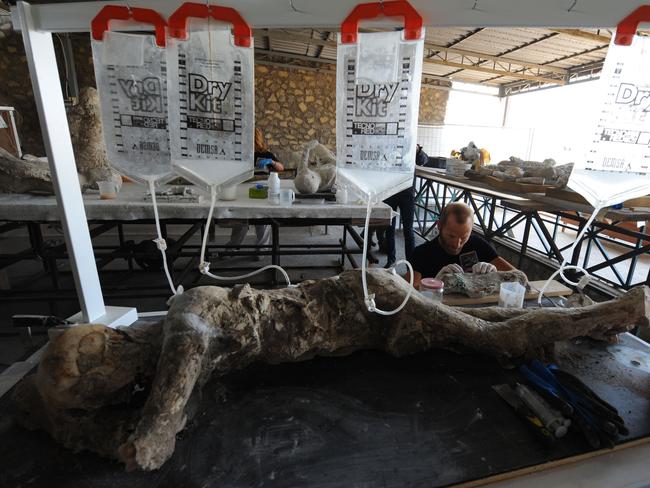Preservation work on Pompeii’s frozen victims of a volcanic eruption reveal the loving last moments of a mansion’s children
THE earth shook. The air burned to 300C. A terrified little boy scrambled for the safety of his mother’s lap. Now, more than 2000 on later, he’s emerged.

THE earth shook. The air burned. A terrified little boy scrambled for the safety of his mother’s lap. Now, more than 2000 years later, he’s finally emerged from his tragic embrace in the buried city of Pompeii.
It was 79BC when Mount Vesuvius erupted. The volcano had been restless. But some residents of the agricultural city of Pompeii below had not been frightened enough to leave their homes.
When the eruption finally came in November, the town — and its inhabitants — were suddenly swamped under a flow of superheated gas and ash.

Estimates vary, but somewhere between 10,000 and 25,000 people were killed in the event.
The petrified remains of Pompeii’s residents — their outlines cast by the slowly solidifying ash — tell the tale of the city’s last moments.
Many were found clustered in the warehouses and docks of the port — desperately seeking space on the last remaining boats. Others were found huddled in public places and their homes.
This four-year-old boy’s story is just one of the most recent, and most poignant, to emerge.

At the height of the terror he sought solace in his mother’s lap. The remains of his father and a sibling were found, fallen, close by.
Their remains were found in what archaeologists call the House of the Golden Bracelet. It was one of the area’s more luxurious homes. Some assume this family was its owners.

It was a picturesque place, full of finely detailed frescoes, bronze and stone statues, and a large garden. It had a spectacular view of the nearby sea.
Death, it seems, was instantaneous: The cloud of volcanic gas and debris was estimated to be some 300C — more than capable of carbonising organic material within moments.

The job of preserving and restoring the bodies has been an emotional experience for the museum’s staff.
“Even though it happened 2000 years ago, it could be a boy, a mother, or a family. It’s human archeology, not just archeology,” said Naples National Archaeological Museum conservator Stefania Giudice.

“It can be very moving handling these remains when we apply the plaster,” Giudice said.
The restored remains of the family and 82 other individuals are the centre of a new exhibition in the Amphitheatre of Pompeii which opened at the weekend.



